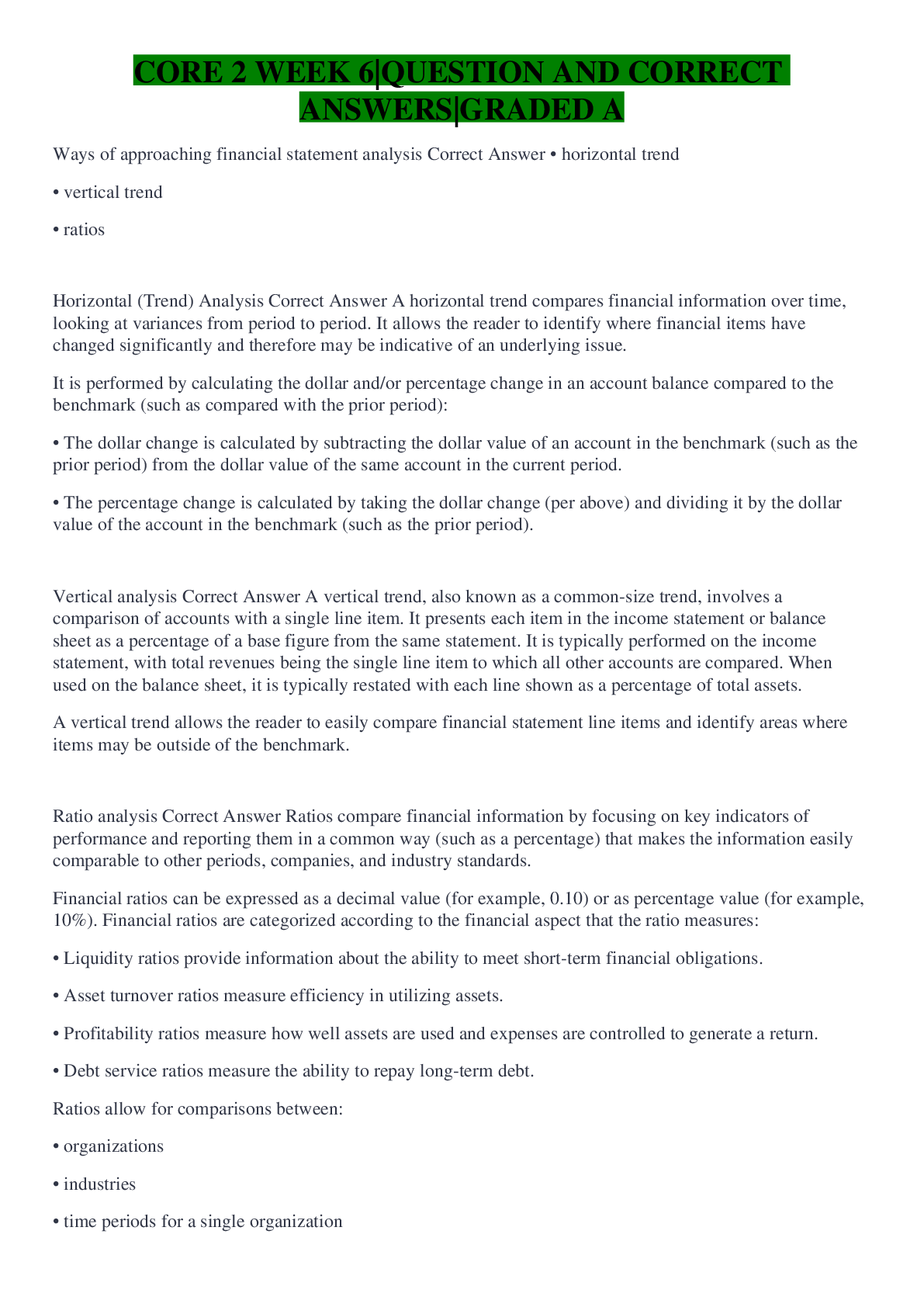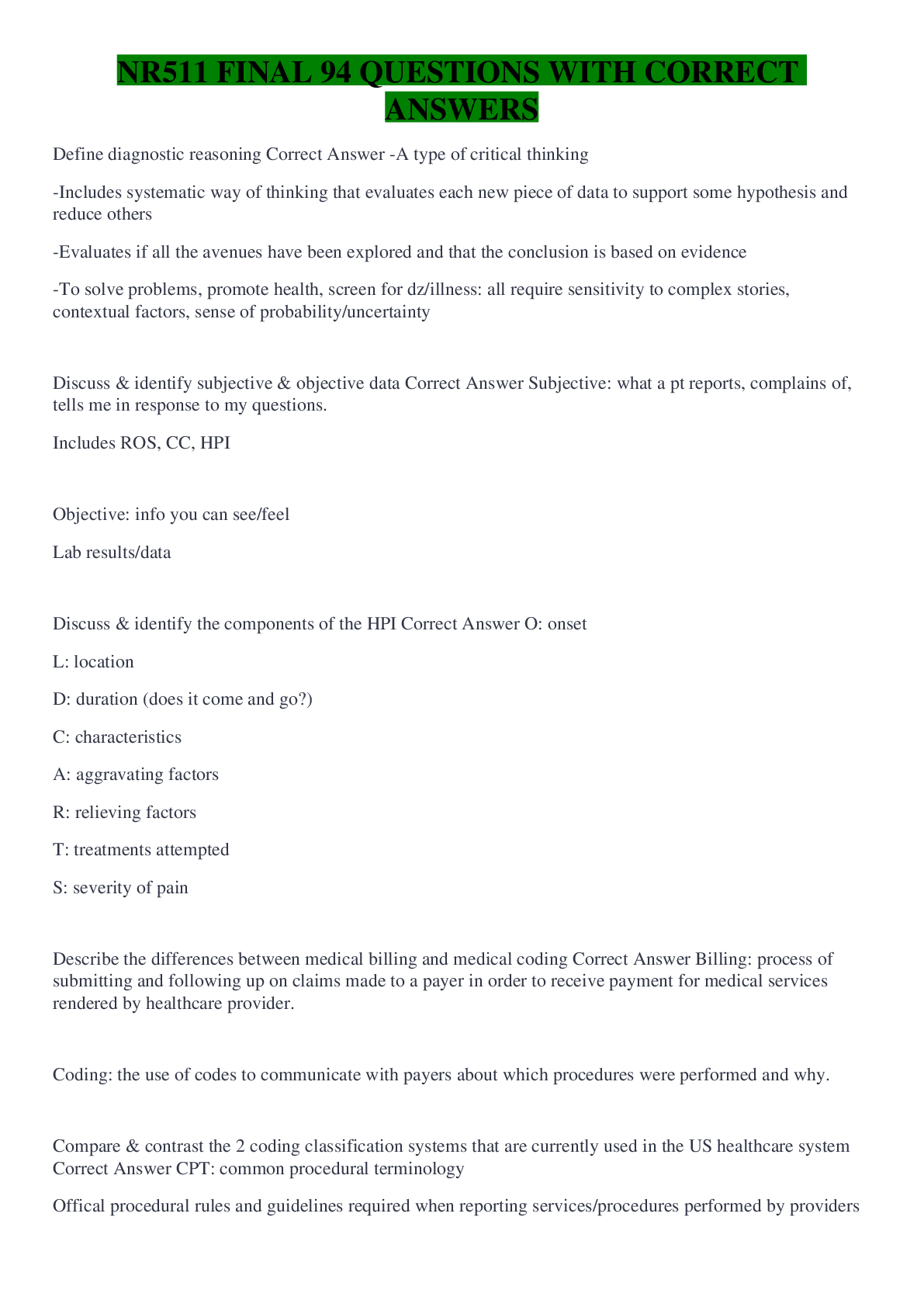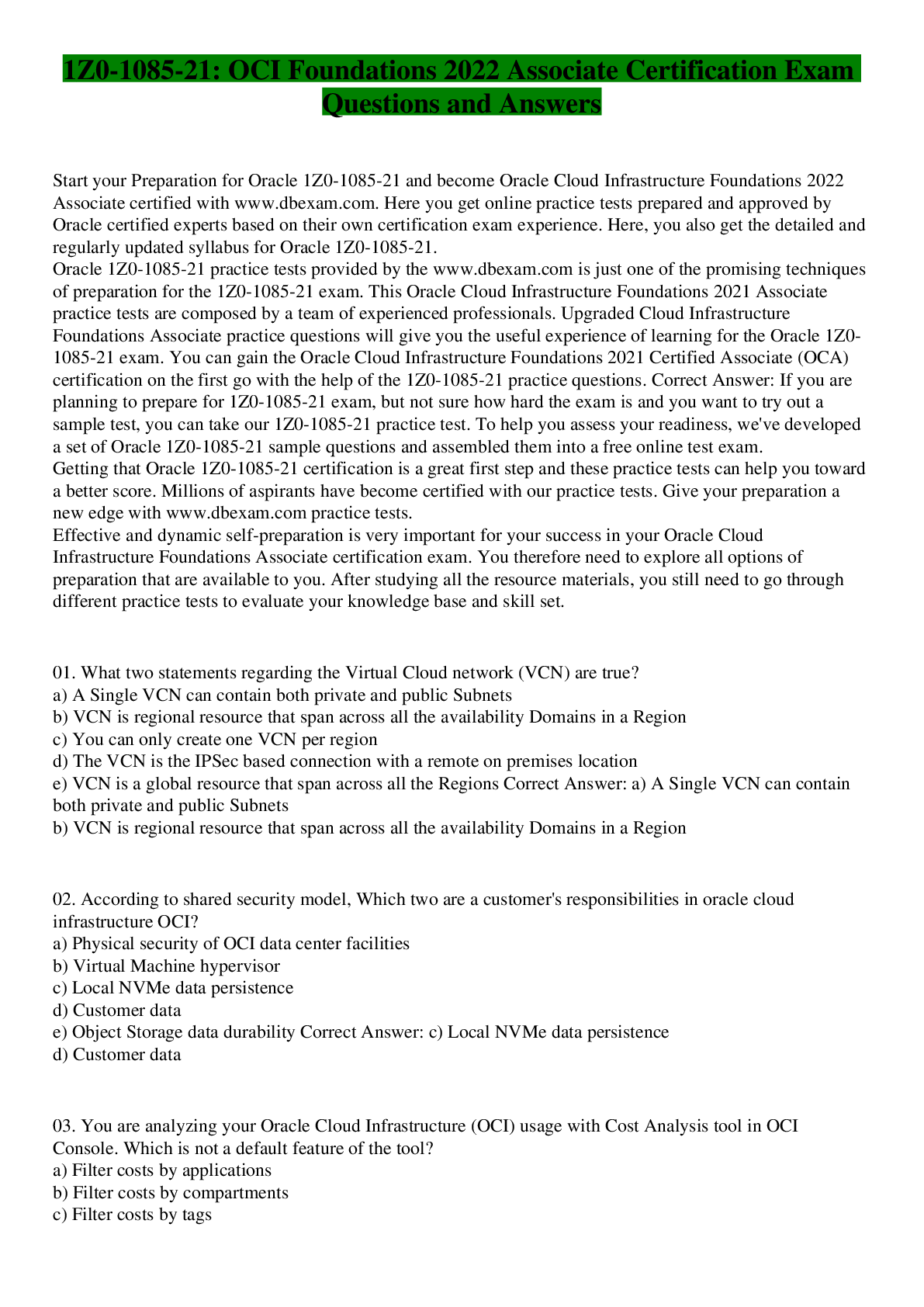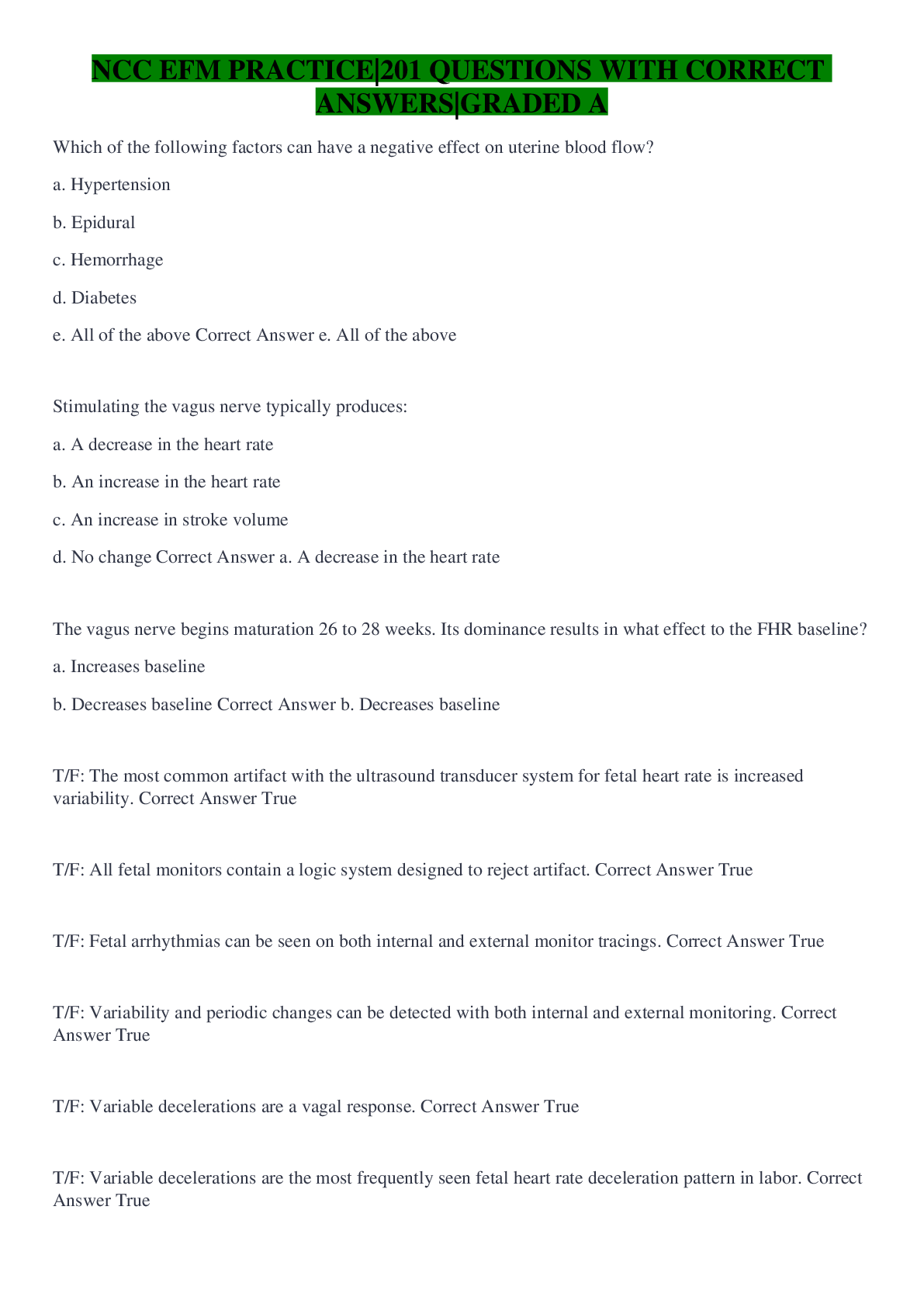Financial Accounting > QUESTIONS & ANSWERS > CORE 2 WEEK 6|QUESTION AND CORRECT ANSWERS|GRADED A (All)
CORE 2 WEEK 6|QUESTION AND CORRECT ANSWERS|GRADED A
Document Content and Description Below
Ways of approaching financial statement analysis Correct Answer • horizontal trend • vertical trend • ratios Horizontal (Trend) Analysis Correct Answer A horizontal trend compares financial... information over time, looking at variances from period to period. It allows the reader to identify where financial items have changed significantly and therefore may be indicative of an underlying issue. It is performed by calculating the dollar and/or percentage change in an account balance compared to the benchmark (such as compared with the prior period): • The dollar change is calculated by subtracting the dollar value of an account in the benchmark (such as the prior period) from the dollar value of the same account in the current period. • The percentage change is calculated by taking the dollar change (per above) and dividing it by the dollar value of the account in the benchmark (such as the prior period). Vertical analysis Correct Answer A vertical trend, also known as a common-size trend, involves a comparison of accounts with a single line item. It presents each item in the income statement or balance sheet as a percentage of a base figure from the same statement. It is typically performed on the income statement, with total revenues being the single line item to which all other accounts are compared. When used on the balance sheet, it is typically restated with each line shown as a percentage of total assets. A vertical trend allows the reader to easily compare financial statement line items and identify areas where items may be outside of the benchmark. Ratio analysis Correct Answer Ratios compare financial information by focusing on key indicators of performance and reporting them in a common way (such as a percentage) that makes the information easily comparable to other periods, companies, and industry standards. Financial ratios can be expressed as a decimal value (for example, 0.10) or as percentage value (for example, 10%). Financial ratios are categorized according to the financial aspect that the ratio measures: • Liquidity ratios provide information about the ability to meet short-term financial obligations. • Asset turnover ratios measure efficiency in utilizing assets. • Profitability ratios measure how well assets are used and expenses are controlled to generate a return. • Debt service ratios measure the ability to repay long-term debt. Ratios allow for comparisons between: • organizations • industries [Show More]
Last updated: 1 year ago
Preview 1 out of 20 pages
Instant download

Buy this document to get the full access instantly
Instant Download Access after purchase
Add to cartInstant download
Reviews( 0 )
Document information
Connected school, study & course
About the document
Uploaded On
Nov 28, 2022
Number of pages
20
Written in
Additional information
This document has been written for:
Uploaded
Nov 28, 2022
Downloads
0
Views
21


























